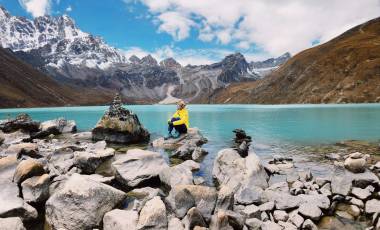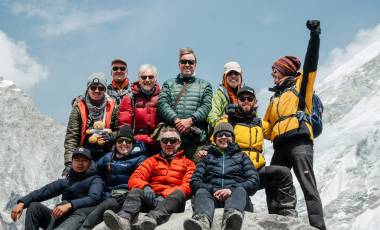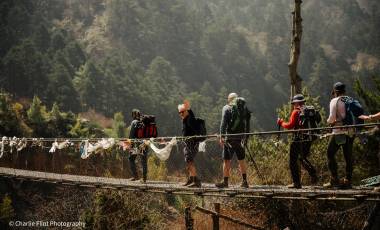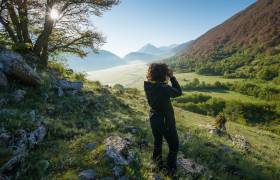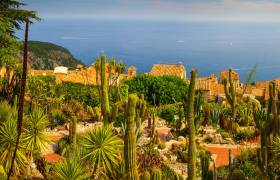Read time – 4 minutes
“Chickole, chickole” were going to be the wisest words I would hear on my Everest base camp trek. Meaning “slowly, slowly” our guides Lakpa and Nima would repeat them every time we hoisted our packs on.
With every inch the trail snaked higher into the mountains, the closer their words came to gospel truth.
Captivated by Everest long ago, enthralled by tales of hardship and endurance of those who had struggled to climb the world’s highest mountain, I couldn’t believe my luck when I heard I was to attempt the Himalayas most iconic trek: Everest Base Camp.
As the day drew closer, my elation was fogged by anxiety. Having never trekked at high altitude before, my romanticised thoughts of bold adventurers and daring explorers began to pale in comparison to my worries.
What if I was struck down by altitude sickness? I’d heard horror stories of people not making it to their final goal, being gripped by debilitating nausea and thunderous headaches. Would this happen to me? How would I cope I didn’t make it?
High Altitude on Everest
So, I did some research, primarily to reassure myself, but also so I could pass on any knowledge I gained to future first-time Base Camp trekkers. After chatting with friends and hitting up Google, I came away with three great tips for the adventure ahead…
Everest Trekking Tips
1) Start taking a herbal supplement called Ginko Biloba up to six weeks before the trek, and continue taking for the duration of the trip. Said to help to improve circulation to the brain, it should reduce the likelihood of feeling altitude effects. In reality, I’m not sure if it really works or it is more of a placebo effect, but it did help me feel a little more prepared for my impending challenge.
2) When trekking drink lots of water – at least five litres a day when at higher altitude. A friend who had just finished the same trek successfully told me that if I didn’t need the loo every 15 minutes then I wasn’t drinking enough!
3) Most important of all, take it slowly (or chickole, chickole). This is not something I thought I’d have a problem getting right!
Before long I found myself in the foothills of the Himalayas surrounded by most impressive mountainscape in the world. My fears of altitude ebbed away as gawped at the glistening, jagged peaks encircling me. That’s not to say I did not feel any effects at all.
Before the final push towards Base Camp, Lakpa took us on an optional acclimatisation trek. The aim was as clear as the azure skies overhead: climb as high as possible in the hope of preparing both mind and body for the last leg of our trek. Some 500m and three hours later, I felt far from my best.
The closest feeling I can liken it to is a hangover combined with a really tough day at work! But I listened to the guides, did as I was told, “Chickole, chickole”, and was rewarded with heart-stopping views over the Himalayas and some strangely delicious garlic soup soon after returning to the warmth of the lodge. A staple for the Nepalese guides, and said to cure just about all ailments, I was pretty much back to normal in no time.
Morning came and so did our final challenge. It wasn’t long until we spotted the bright yellow tents at Base Camp proudly jutting out against the glaciers and snowfall at the foot of the mighty mountain. But somehow, defying all expectations, this was not to be the highest point (both literally and figuratively) of the trip for me.
The following day, zipping up our bright down jackets, we headed up to 5,545m to the summit of Kala Pattar. From here, we had the ultimate views of Everest. Surrounded by now firm friends, we all felt exhilarated with our achievement and in awe of the beauty of Everest facing us. All too soon Lakpa was telling us it was time to head down, and this time we didn’t need any encouragement to take it “chikole, chikole”.
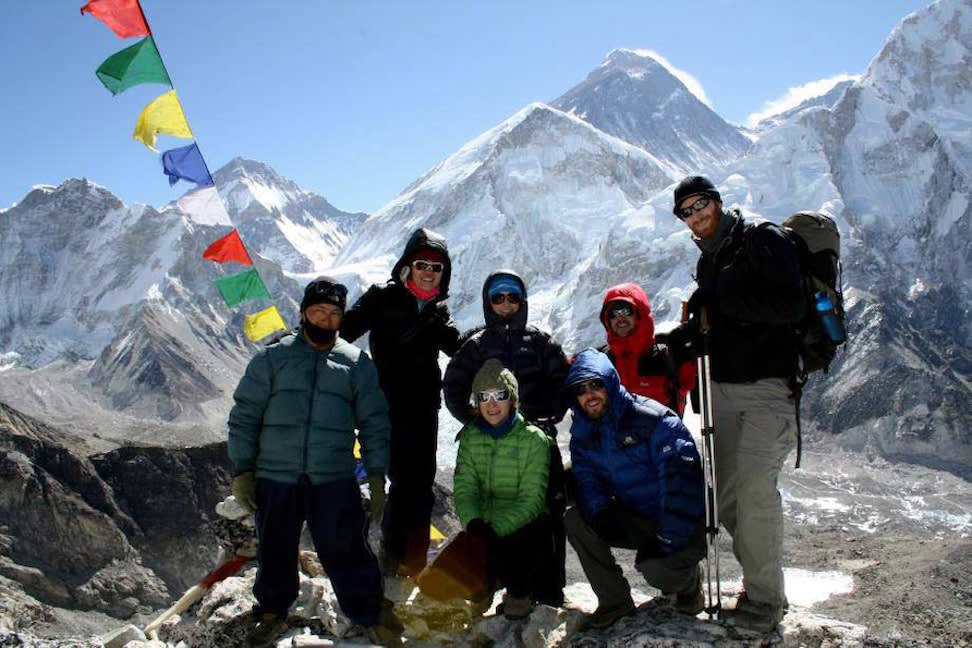 Chloe and her group
Chloe and her group By Chloé Knott, our Walking & Trekking Product Manager, who trekked to Everest Base Camp in April.
View all of our Everest treks below.
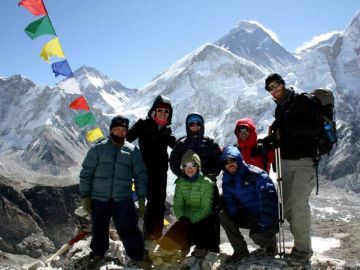
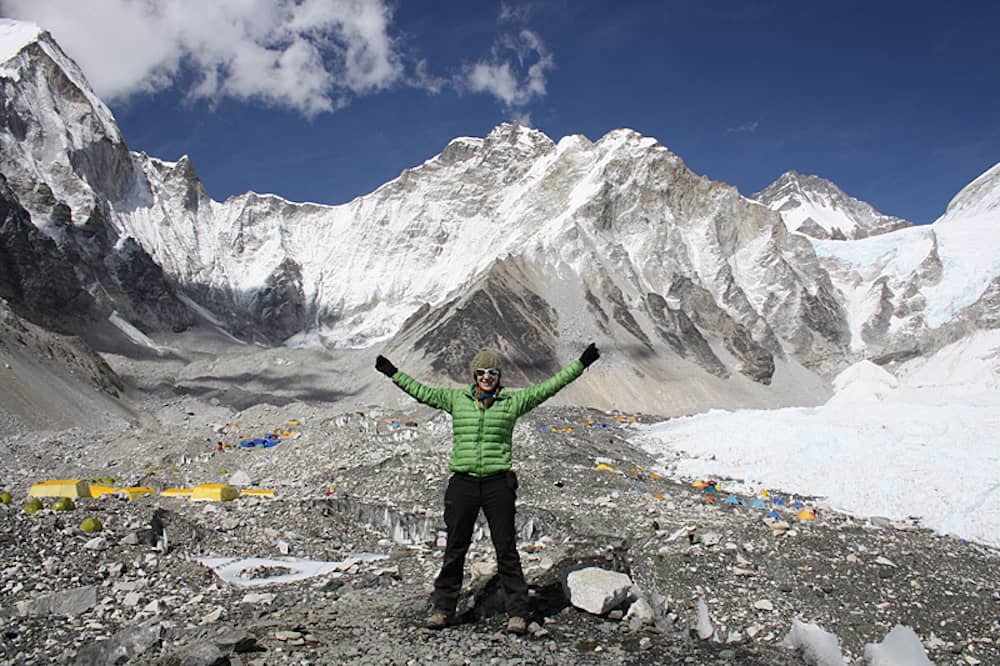
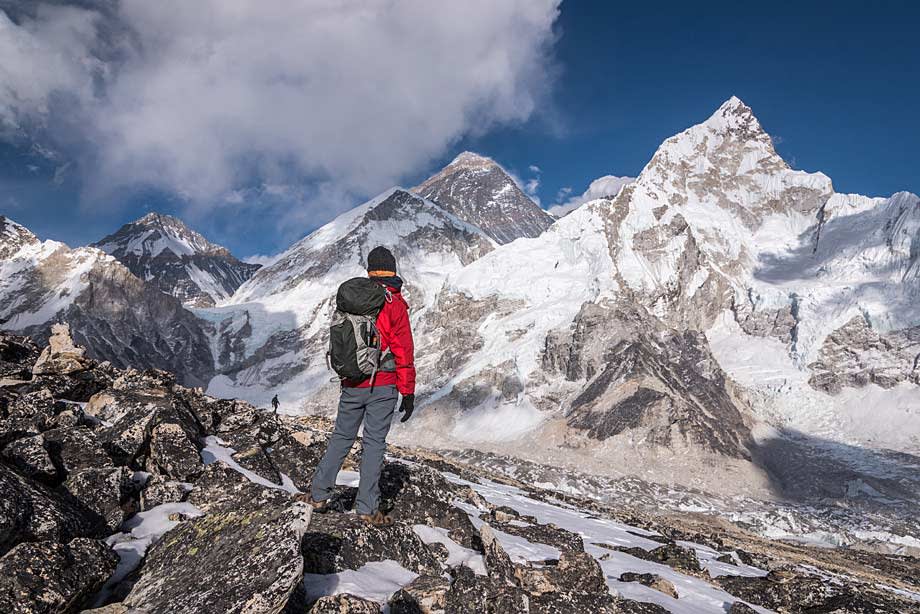
 Trekking to Everest Base camp
Trekking to Everest Base camp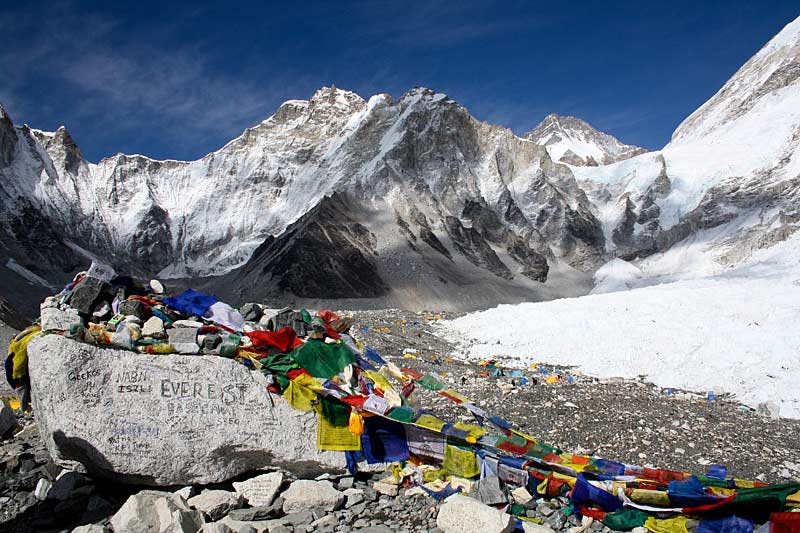 Everest Base Camp
Everest Base Camp